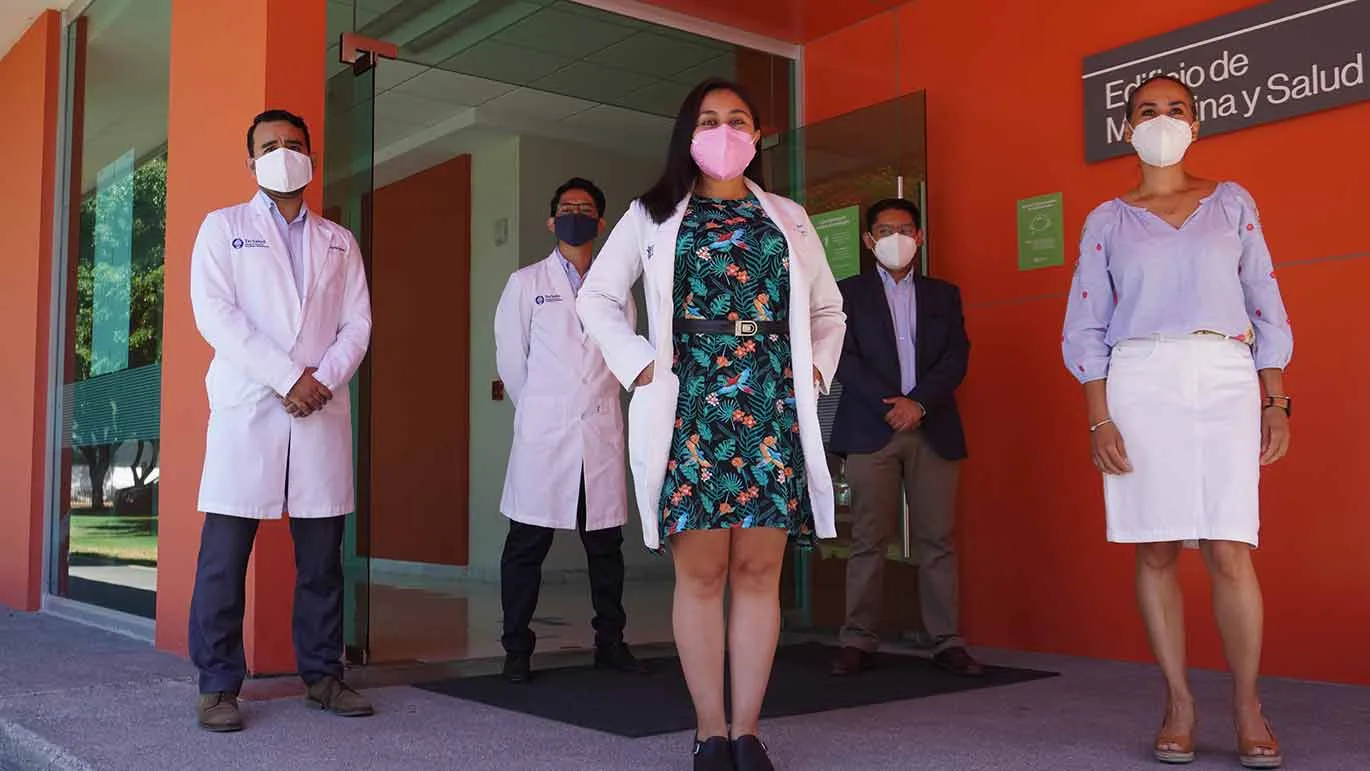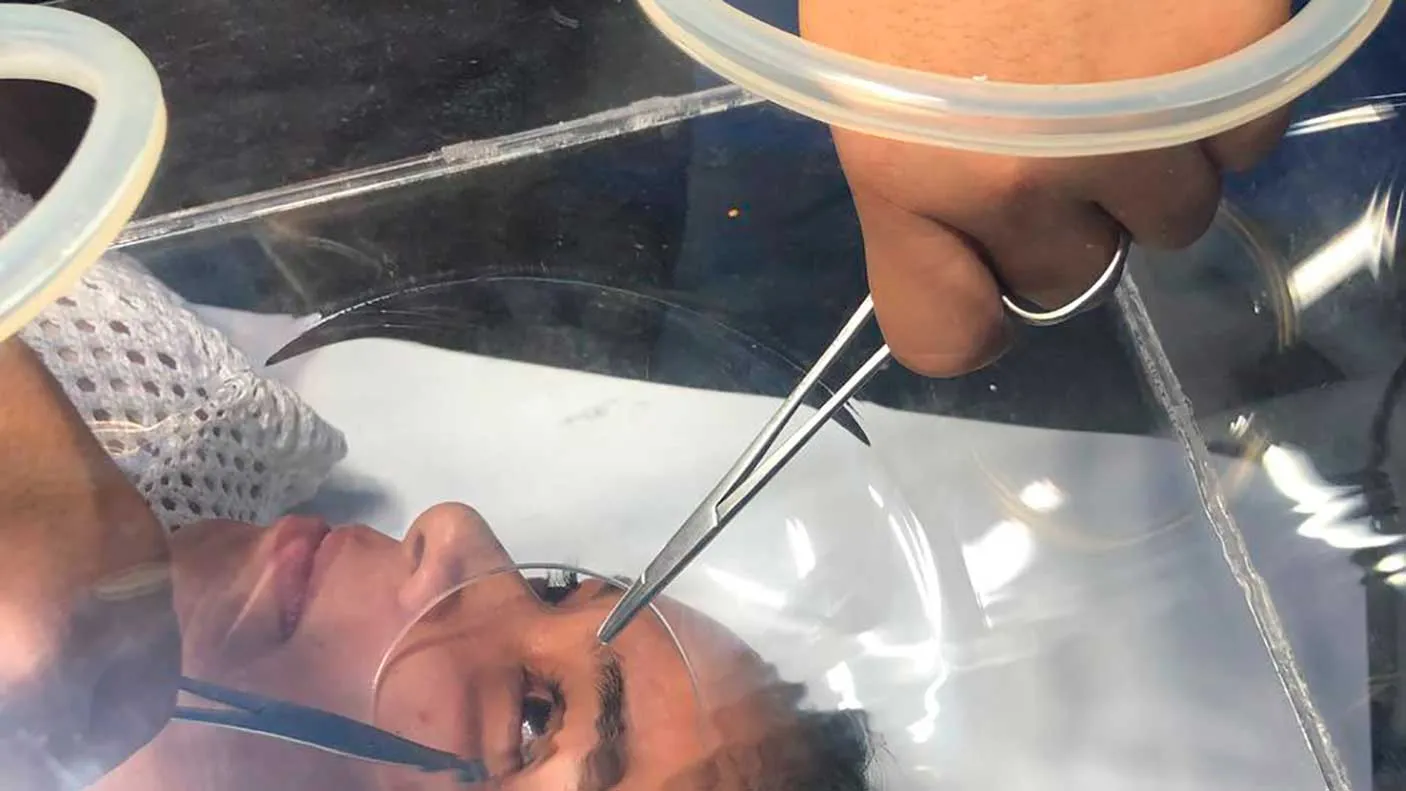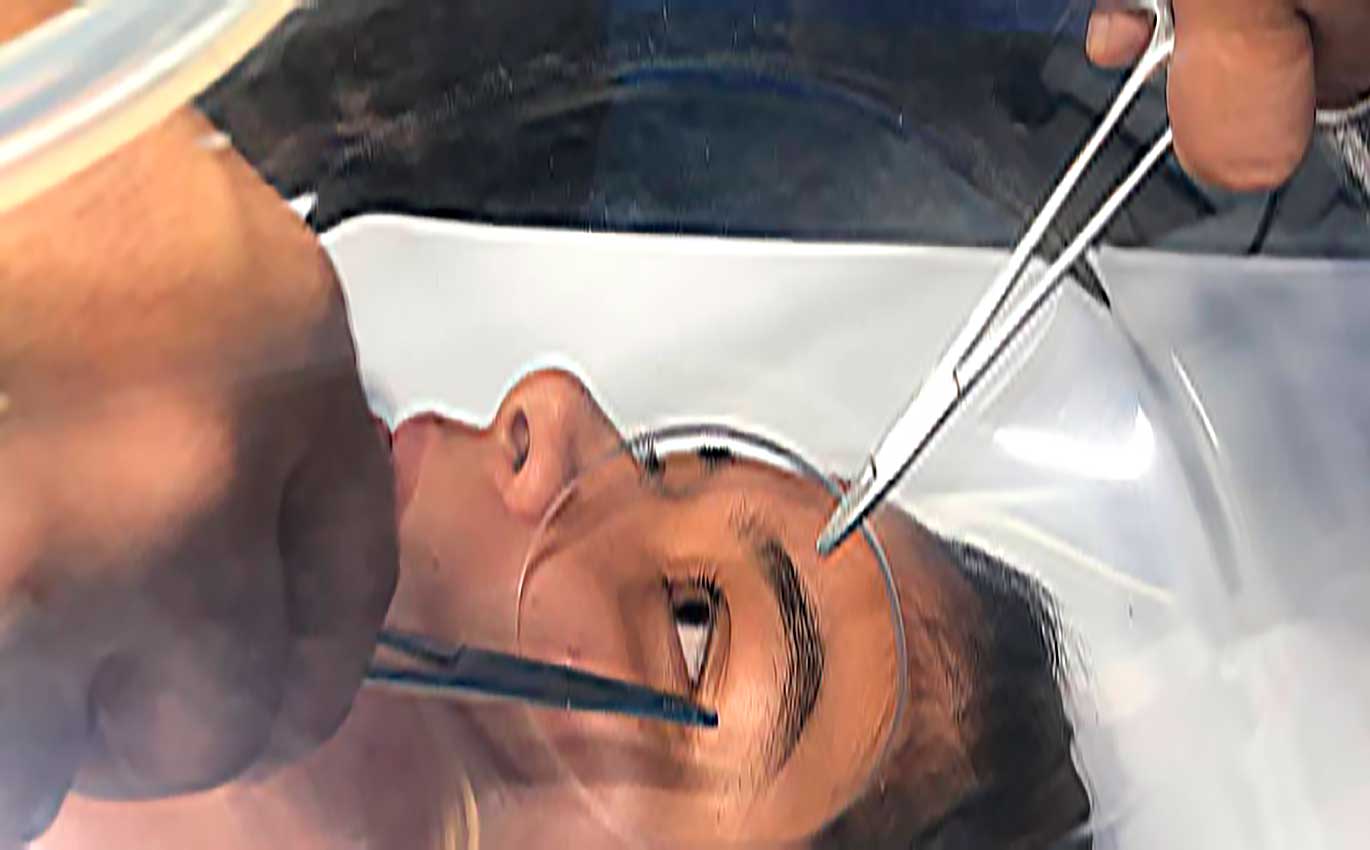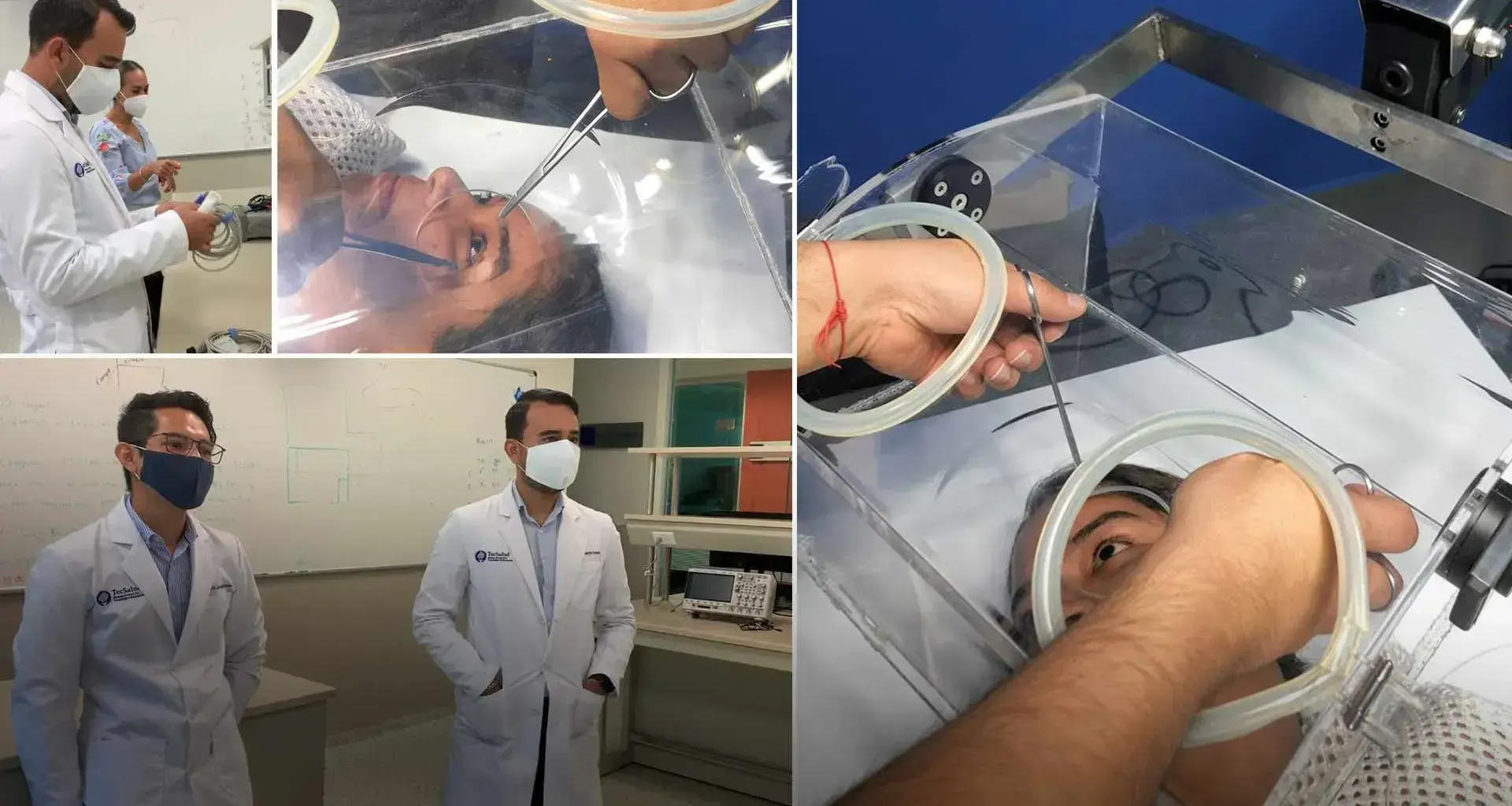Tec de Monterrey researchers have obtained a patent for INNERT, a portable ophthalmic device that offers a sterile environment for outpatient procedures, providing a solution to specialist doctors.
Rita Fuentes, a professor participating in the project, explained that the device allows for outpatient interventions on the eye in a sterilized environment and prevents subsequent complications such as infections.
Academics from the School of Engineering and Sciences (EIC) and the School of Medicine and Health Sciences (EMCS) have registered INNERT with the Mexican Institute of Industrial Property (IMPI).
“INNERT provides them with the sterile environment they need,” added the academic. The device is a chamber that’s placed over the patient’s face, with the eye remaining inside the sterile chamber.

This development offers several advantages since, according to Professor Rita Fuentes, INNERT is:
- Easy to use
- Safe for both the patient and doctor
- Low cost
- Portable
A device for both ophthalmology and society
“We work with retina specialists, and they’ve told us that a high percentage of people end up with an infection when they perform certain interventions at doctor’s offices,” Fuentes said.
Doctors insert their hands into the chamber to perform the procedure. Upon completion, INNERT is removed, and air is released into the chamber in order to disinfect it to be used again.
“We designed the device with portability in mind. Its base has wheels that allow it to be moved from one place to another in the doctor’s office,” said Fuentes, who is also coordinator of the Cyber-Physical Systems Laboratory at Tec Guadalajara.
According to Luis Manuel Aparicio Romero, a researcher at the EMCS who also participated in the development, another advantage of INNERT is that it streamlines processes and allows more patients to be treated.
“It brings surgical procedures to the doctor’s office and reduces patient preparation time, as well as the number of medical personnel needed to perform the procedure.”
Aparicio added that INNERT makes it possible for “more patients to be treated and more therapies to be performed on the eye.”
An interdisciplinary team of research professors and master’s students took part in developing the device at the Tec’s Guadalajara campus:
- Arturo Santos García
- Alejandro García González
- Joel Ruíz Rojas
- Gisela Hialita Sánchez Sosa
- Ricardo Javier Díaz Domínguez
- Juan Carlos Altamirano Vallejo
- Luis Manuel Aparicio Romero
- Rita Quetziquel Fuentes Aguilar.

Research and technology transfer
INNERT began development in 2016 and is currently in the technology transfer phase. This means that once it had been patented, the Tec searched for a partner.
The Medical and Surgical Retina Center has become the recipient of the technology and will be in charge of taking development to the next level.
Professor Fuentes described technology transfer as one of 3 options for a project of this type:
- Apply for a patent and obtain it.
- Create a company to use the patent. Carry out tests to sell it, produce it, and commercialize it.
- Find a company that’s dedicated to producing and marketing the device (technology transfer).
“INNERT provides them with the sterile environment they need.”
They can now carry out usability tests, clinical phases, or clinical protocols with patients, as decided by the Federal Commission for the Protection against Sanitary Risks (COFEPRIS).
This organization regulates these developments for commercialization. Despite the research having already been transferred, the campus’s team continue to work on the project.
They’re currently working on marketing aspects and carrying out market research to identify commercial feasibility.
At the same time, they competed for funds such as From Science to Market, from the Jalisco State Council for Science and Technology (COECYTJAL), which contributed 500,000 pesos.
This grant is for bringing scientifically based technological developments to market. With this, the team from Guadalajara campus is looking to diversify the application of this prototype.
To this end, they’re looking for further applications for the device, such as on burn patients and in the areas of beauty and cosmetic surgery.

ALSO READ:
ALSO READ:





